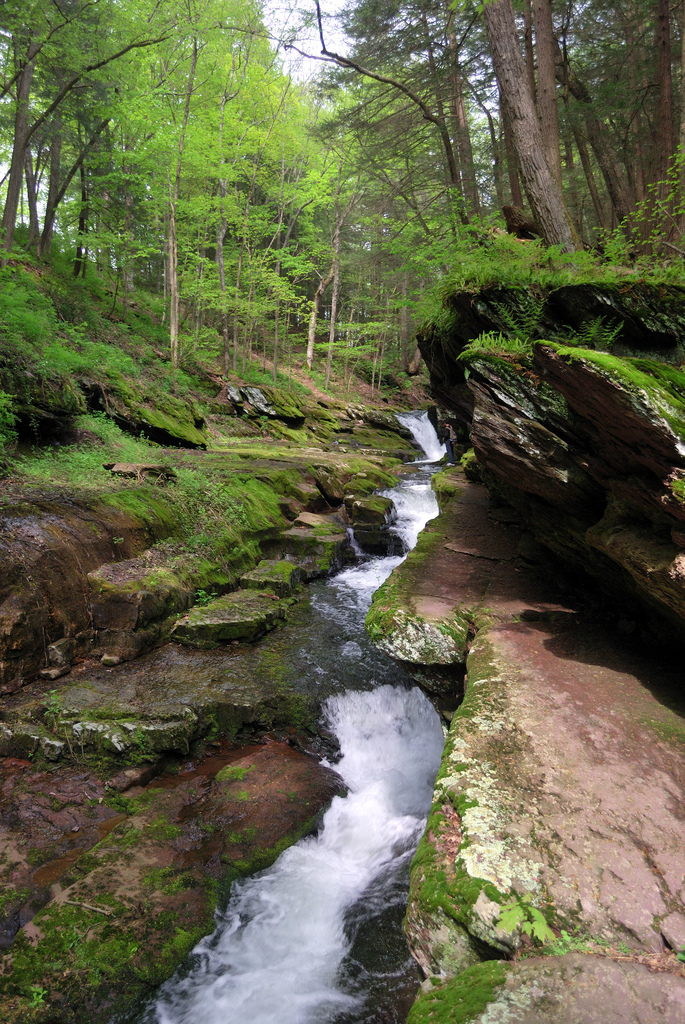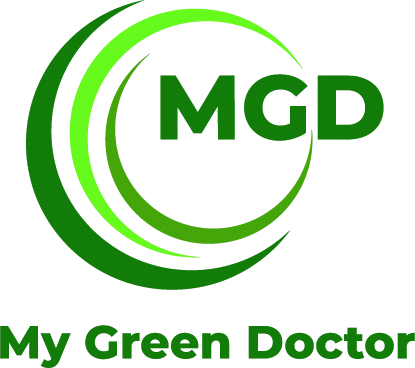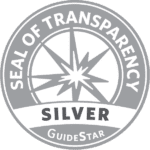Introduction
Clean water is a necessity for human health. It is critical that we take good care of this finite resource and not waste or contaminate it. The depletion of water supplies is costly, degrades the natural environment, and can threaten human health.
The environmental benefits of using water efficiently include building fewer dams, reservoirs, water treatment plants, and wastewater treatment facilities; and avoidance of the habitat degradation that accompanies surface and groundwater withdrawals.
Water conservation practices in a healthcare office include the use of efficient appliances and fixtures, behavioral changes, and changes in landscape irrigation practices. Together, these can reduce water consumption by as much as one third. The typical payback period for installing water-saving devices is three to seven years. In addition, energy use often goes down as well. These water and energy savings can have a significant impact on the office bottom line by lowering water, sewer, and energy bills, plus reducing maintenance costs. There is also the positive impacts that health professionals make in the community when water efficiency habits are shared with our patients and their families.
Changing water-use practices requires employee education. Changes to infrastructure, landscaping, and irrigation may require an initial capital investment, and a little time spent researching appropriate measures.
We offer 59 cost-effective water efficiency Action Steps and Education Steps for your healthcare office, clinic, or outpatient facility. We suggest that you begin with the three “Quick Start, Now!” Action Steps listed in the next section.
Water Efficiency Action Steps
We offer dozens of proven Action Steps and Education Steps that you can adopt to reduce your office’s water usage. Your Green Team will want to discuss these and then decide which action steps to complete.
We also will challenge your healthcare office to come up with your own ideas by asking you, “What else?” Please email us your “What Else” ideas for us to add to the workbook.

Conduct a Water Audit: How much water does your office use? What are the major uses? Where is water being wasted? Begin your water efficiency project with an audit that assesses your workplace’s current water use. Then your Green Team can explore water efficiency opportunities. You can perform your own office water assessment or obtain outside help through free water audits from your local utility.
Green Fact: According to the EPA, studies conducted in Seattle, Washington, and by the East Bay Municipal Utility District in California have shown that a household can save approximately 570 gallons per year by replacing existing bathroom sink faucet aerators with high-efficiency 1.5 gpm aerators.
- Water and sewer bills for the previous full year. Many utilities provide this information online, including with graphs of your monthly consumption and costs. If your building has many tenants, your landlord may be able to provide this information.
- Hot water bills, if available.
- Water softener and water filtering costs, if applicable.
- Water system annual maintenance costs, if applicable.
- Equipment maintenance schedules, if available.
- Learn the locations of your water meters.
- Make a list of your equipment that uses water: sinks, toilets, showers, machines.
- Sources of drinking water: tap water? Large-bottled water? Single-serve bottled water? What are the costs for these sources?
- Are we recycling water bottles and other containers after their use?
- Learn the types of landscape, irrigation, and irrigation control systems.
- Faucets: Check whether your office has water-efficient, low-flow faucets. The flow rate, in gallons per minute (gpm), is often imprinted on the rim where the water comes out of the faucet, and may read something like “2.5gpm”. The U.S. Environmental Protection Agency (EPA) recommends a flow rate of 1.5 gpm or less for faucets.
A. Reduce water use by 30%, or B. Qualify for a LEED credit. LEED (Leadership in Energy and Environmental Design) is a nationally-recognized green building standard that was developed by the U.S. Green Building Council (USGBC). Due to the complexity of the LEED standard, we recommend that you hire a consultant if you would like to pursue LEED certification.
- The LEED credit for “Fixtures and Fittings” is obtained by reducing potable water use of indoor plumbing fixtures and fittings to a level equal to or below the baseline listed in LEED 2009 for Existing Buildings: Operations & Maintenance. The baseline is calculated assuming that 100% of the building’s indoor plumbing fixtures and fittings meet the plumbing code requirements as stated in the 2006 editions of the Uniform Plumbing Code (UPC) or International Plumbing Code (IPC). Fixtures and fittings included in the calculations for this credit are toilets, urinals, shower heads, faucets, faucet aerators, and metering faucets. For a plumbing system substantially completed in 1993 or later throughout the building, the baseline is 120% of the water use that would result if all fixtures met the codes cited above. For a plumbing system substantially completed before 1993 throughout the building, the baseline is 160% of the water use that would result if all fixtures met the codes cited above.
Your goal is to have the right equipment and to adopt habits of wise water use.
The 1992 United States Energy Policy Act established water efficiency plumbing standards for common plumbing devices. The American Water Works Association estimates that a savings of 6.5 billion gallons per day will be achieved in the US by the year 2025 through these standards. The standards set for maximum water usage are:
- Faucets: 2.2 gpm @ 80 psi (8.3 liters per minute)
- Toilets: 1.6 gallons per flush (6 liters per flush)
- Urinals: 1.0 gpf (3.8 lpf)
- Showerheads: 2.5 gallons per minute @ 80 psi (9.5 liters per minute)
However, new water-saving devices can offer you much better efficiency than those listed above.
- Install low-flow faucets (2.2 gpm or less).
- Install low-flow faucet aerators: 0.5 – 2.5 gpm for lavatory sinks and 2.0 gpm or less for kitchen sinks. Aerators placed on the faucet add air to the water flow so that less water is needed for washing. They are an inexpensive, practical way to save water.
- Install self-closing faucets. These are faucets that turn themselves off automatically after a few seconds. They may be activated by pushing down on a button or by infrared detection of the person’s hands. These cost from $50 U.S. to more than $200 per faucet.
- Install faucet sensors on all faucets: These simple, battery-operated motion detectors are added to individual faucets in restrooms and kitchens to automatically turn faucets off after use, preventing unnecessary water use in restrooms and kitchens
- Install and use waterless hand sanitizers at each sink. Waterless sanitizers generally use alcohol-based cleaners instead of soap and water. These clean adequately for most purposes, though are not acceptable for cleaning the hands of people working in clean locations such as operating rooms. Read the list of ingredients in these cleaners to be sure that the chemicals are not harmful to the environment.
- Waterless urinals can save thousands of gallons a year and are very low maintenance with the need to change out the “no odor” cartridge only 2-3 times per year.
- Replace existing urinal flush mechanisms with ones that flush at 1.0 gallon or less (as low as 0.125 gpf).
- Convert some of your men’s restroom toilets to water-efficient urinals.
- Reservoir Dams: You can save water with each flush by placing into the toilet tank a “reservoir dams” or a simple brick to decrease water use.
- Inspect toilets periodically for leaks. Adjusting the flush value is a common way to fix a leak. Here is a guide for repairing simple toilet problems: a simple repair.
Here are some additional ways you can reduce water usage in your office:
- Adopt a policy to use water wisely in the office, using the ideas listed below.
- Adopt a policy and habit of reporting leaks or examples of water wasting in your facility.
- Adopt a policy for monthly inspection and repair of leaks in your facility. Leaks in toilet tanks can be found using leak detecting tablets, which may be available from your water company. Toilets are usually very easy to fix. For example, see www.toiletology.com or contact your building manager or plumber.
- Decide to use city tap water instead of bottled water.
- Provide reusable cups instead of disposable cups. If using disposable cups, use ones from biodegradable sources such as corn, or use cups from recyclable plastic (plastic types “1” or “2”).
- Use “dry” floor cleaning methods, followed by damp mopping indoors, rather than spraying or hosing surfaces with water.
- Change window cleaning schedule from regularly scheduled to “as required.”
- Post signs in your restrooms and in the office kitchen to encourage wise water use (such as, “Please turn me off”, or “Please tell us if we leak or drip.”).
- Avoid letting the water run if not needed, such as when washing dishes, brushing your teeth, washing your hands, or shaving.
- Dishwasher and clothing washing machines: Use environmentally-friendly detergents. Scrape dishes rather than rinsing before putting them in dishwashers. Use the short or energy-saving cycles. Run machines only when full or at least use the small-load settings on these machines. New water-efficient dishwashers only use 5-8 gallons. Check out https://www.greenchoices.org/ for more ideas.
- Turn off your hot water heater: Turning off the hot water heaters for your entire building saves a lot of money and energy. This Action Step was researched and adopted in 2010 by the public health specialists of the Escambia County Health Department in Pensacola, Florida, U.S.A., and found to be safe and to produce large savings of money and carbon emissions.
- Encourage office members to contribute ideas for water savings.
Did you know that about half of our drinkable water is used for home gardens, lawns and commercial landscaping?
- Irrigation
- Wise Watering Policy
- Inspect Irrigation Systems
- Trees and Shrubs
- Irrigation Tips
- Reuse Water
- Gray Water
- Outdoor Fountains
- Hoses
- Roof Drains
- Install soaker hoses or drip irrigation systems that may use less water than sprinklers.
- Install moisture sensors on sprinkler systems, or install rain shut-off devices or other controls that turn off the irrigation system when it is raining. Generally the best control systems are certified by the Irrigation Association’s (USA) “Smart Water Application Technology” (SWAT) program.
- Use pressure reduction valves to lower the irrigation system’s water pressure to no higher than 50 psi ( pounds per square inch).
Choose the right plant for each location on your property, considering soil conditions, natural water drainage, and light. For each plant, consider its mature size, sun or shade requirements, soil and water needs, salt and cold tolerance as well as pH tolerance. Native succulents, sedges, grasses and flowers usually require less water, fertilizer and pest control than non-native species. Look into creating a rain garden and planting buffer zones to reduce runoff.
Invite your landscape maintenance team to join your Office Green Team and consider these steps:
Water conservation does not have to end with your office. Education your community is an important step in creating a greener environment.
- Create a water efficiency “tip of the week” program.
- Prepare informational handouts on for patients and staff on topics such as water conserving faucets, toilets and appliances; bottled water; and gardening methods.
- Prepare a handout based on the online guide, “Forty-nine tips for saving water in the home“.
- Prepare an informational handout on pesticide and chemical use.
- Post a sign in your waiting room, restrooms and break room saying, “We conserve water for everyone’s health.”
- Post a sign in restrooms asking users to conserve water and to report any leaks or drips.
- Invite suggestions for water conservation from those working in the office and from your patients.
- Add water efficiency ideas to your office website, newsletter, and bulletin boards.
- Offer a prize for the best water-saving idea or action each quarter.
- Publicize your action plans, accomplishments or setbacks. Seek feedback from those working in the office.
- Schedule your water utility, agriculture extension office or a local non-profit to make a luncheon presentation to encourage water efficiency in the office and at home. Some water utilities offer free water conservation brochures or kits.
- Develop, support or sponsor a community garden. Check with your agriculture extension office, city government, or garden clubs to learn how you can get involved.
What else? Please email us your “What Else” ideas for us to add to the Workbook. These suggestions will help you toward Green Doctor Office Recognition.
Tips for Success
Your Improvement Plan consists of the Action Steps that you choose to adopt for the office.
For each action step:
- Record the conditions in your office before making improvements, such as your monthly water use. Record this on a Green Team Notes form or in a Green Team spreadsheet.
- Establish specific, measurable targets for what you want to accomplish such as, “Adopt by December 1 a policy to inspect irrigation systems at least quarterly to detect and repair leaking or malfunctioning systems,” or “Install low-flow faucets on all sinks by June 1.”
- Agree on a leader for each Action Step.
- Agree on the responsibilities of each person in the office.
- If needed, obtain agreement or approval from the office manager or chief executive.
- Communicate with your office colleagues. Listen for ideas and try to elicit helpful criticisms.
- Educate your patients, families & community. Which ideas could be shared with your own families or with your patients? Part of the Green Team Improvement Plan must include an education plan. Your waiting room can become a site for education.
- Reassess the Plan after a reasonable period.
Background Information
- Less than 3 percent of the earth water supply is fresh water, and much of it frozen in glaciers or ice caps. This leaves less than one percent of all the water on earth for our agriculture, industries, offices and homes.
- Each year, global water use rises by 2 to 3 percent.
- Florida receives, on average, annual rainfall of 50-55 inches, 67 percent of which evaporates or runs off the land into surface waters before it has a chance to soak into the ground.
- Global climate change, due to the increased levels of greenhouse gases such as carbon dioxide, is expected to lead to warmer temperatures, a more active hydrological cycle, an increase in the water holding capacity in the atmosphere, and changes in rain patterns that are difficult to predict.
- Compared to the amount of water we use in our homes and offices, more water is used to make the things we consume (such as food), and to generate the electricity that we use.
- It takes 62,600 gallons of water to produce one ton of steel; 1,500 gallons to make a barrel of beer; 9.3 gallons to process one can of fruit or vegetables, and 3-4 gallons of water to make 1 gallon of bottled water.
- The following are the number of gallons of water needed in California to produce an edible pound of:
- Tomatoes: 23
- Apples: 49
- Milk: 130
- Grapes: 70
- Carrots: 33
- Pork: 1,630
- Potatoes: 24
- Oranges: 65
- Eggs: 544
- Chicken: 815
- Wheat: 25
- Lettuce: 23
- Bottled water: 4
- A dripping faucet can waste 20 gallons of water per day, and a leaking toilet up to 200 gallons.
- Storm drains are one of the worst sources of water pollution. Runoff of fertilizers, pesticides, and oil from landscapes and roads flows untreated into rivers and oceans.
- Every drop of wasted hot water is paid for three times: once for the fresh water, once for the energy to heat the water, and once for sewer charges. Saving water also reduces expenditures for wells, pumps, water towers, and other water systems.
- The Veterans Affairs hospital in Portland, Oregon found it saved about $17,000 yearly by using low flow faucets and shower heads, with an investment payback of less than one year.
- Twenty minutes of outdoor watering can use 700 gallons of water for a typical home. Many native plants take much less water, fertilizer and time to maintain.
- Most backyard plant problems are caused by excessive, wasteful watering.
- “Reclaimed” water is wastewater that is partially treated and then reused. Reclaimed water is used in many communities to irrigate golf courses, commercial landscapes, sports stadiums, agricultural fields, and residential yards. It can also be used in industrial heating and cooling systems, for car washes, and to replenish wetlands during times of drought. Separate pipes are required to carry reclaimed water from the treatment plant to the sites of use.
- The advantages of using reclaimed water include:
- Saving drinking water supplies for use by homes and offices
- Offers an environmentally responsible alternative to wastewater disposal
- Reduces the need to construct new drinking water facilities
- Reduces the need to transport water from other places

